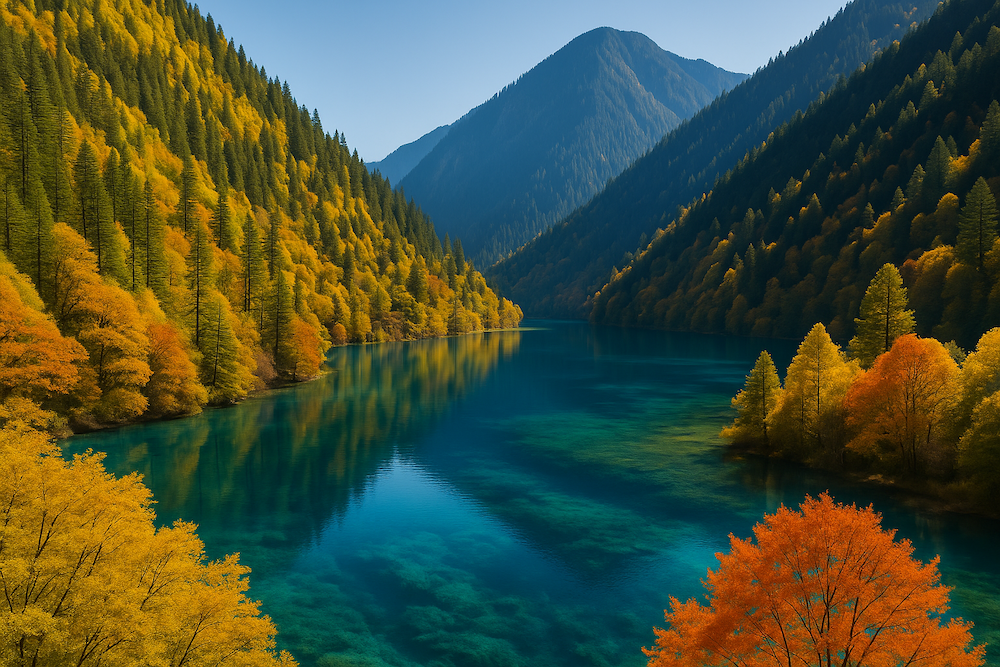
Sichuan Travel Guide: Discover Pandas, Temples & Natural Wonders
When’s the best time to visit Sichuan? What’s the must-see attraction besides pandas? How do you get around? If these are the questions on your mind while planning your China adventure, this blog post is for you. Our Sichuan travel guide offers the perfect blend of culture, wellness, and natural immersion—just what Puyu Retreat travelers are looking for.
🌟 Why Visit Sichuan?
Sichuan, often called the “Land of Abundance,” is located in southwestern China and offers a unique combination of rich cultural heritage, dramatic landscapes, and some of the world’s most beloved wildlife—the giant panda. Whether you're seeking ancient temples, spiritual mountains, or serene valleys, Sichuan welcomes you with open arms.
This province is also the birthplace of Sichuan cuisine, one of the most recognized and bold-flavored culinary traditions in the world.
🏯 Top Attractions in Sichuan

🐼 Chengdu Research Base of Giant Panda Breeding
Get up close with more than 200 pandas at this world-renowned center just outside Chengdu. If you’re lucky, you’ll catch baby pandas playing or snoozing in their enclosures. A volunteer experience lets you prepare panda meals, clean pens, and earn a certificate.
🗿 Leshan Giant Buddha
This awe-inspiring 71-meter tall Buddha statue was carved into a cliff more than 1,200 years ago. Take a river cruise for the best view, or hike down the famous nine-switchback path if you're up for an adventure.
🏔️ Mount Emei Scenic Area
A UNESCO World Heritage Site, Mount Emei combines natural beauty and Buddhist spirituality. Climb past ancient temples and meet wild monkeys on your way to the summit’s sea of clouds.
🏞️ Jiuzhai Valley (Jiuzhaigou)
Known as the “Valley of Nine Tibetan Villages,” this fairyland is filled with alpine lakes, waterfalls, and snow-capped peaks. October is a particularly magical time to visit, as the forests turn golden.
🎨 Sanxingdui & Jinsha Museums
These archaeological sites reveal a mysterious ancient civilization in China’s southwest. Bronze masks and gold sun symbols have made global headlines and are redefining what we know about early Chinese history.
🍜 Chengdu: City of Pandas and Cuisine
Chengdu is not only a transportation hub—it’s also the first Asian city named UNESCO's City of Gastronomy. Beyond pandas, highlights include:
-
People’s Park for a glimpse into local tea culture
-
Wide and Narrow Alleys for snacks, hotpot, and heritage vibes
-
Sichuan Cuisine Museum to cook your own spicy masterpiece
🧘♀️ Sacred Mountains and Spiritual Retreats
Sichuan is dotted with sacred destinations perfect for those seeking tranquility and spiritual elevation:
-
Daocheng Yading offers Tibetan alpine beauty and is known as "the last Shangri-La"
-
Huanglong Scenic Area boasts colorful terraced pools and rare wildlife like golden monkeys and giant pandas
These spots are ideal for eco-conscious travelers and those interested in Eastern wellness traditions, aligning beautifully with Puyu Retreat’s philosophy of natural immersion and spiritual healing.
📅 When to Visit Sichuan & How to Beat the Crowds
Sichuan is beautiful year-round, but timing your trip can enhance both your comfort and connection with nature:
-
Spring (Mar–May): Mild temperatures, blooming flowers, and fewer tourists make this a great time to explore both Chengdu and the mountain regions.
-
Autumn (Sep–Oct): Often considered the best season, especially for Jiuzhai Valley, when the forests blaze with red, gold, and orange hues.
-
Summer (Jun–Aug): While hot and humid in the lowlands, it’s a refreshing time to retreat to the cooler highlands like Mount Emei, Daocheng Yading, and Tibetan areas.
-
Winter (Nov–Feb): Tranquil and serene—ideal for travelers who prefer stillness, snowy landscapes, and hot springs, though access to high-altitude areas may be limited.
🙌 How to Beat the Crowds
-
Avoid Chinese national holidays such as the first week of October (Golden Week) and Chinese New Year (January–February), when domestic travel peaks.
-
Visit early in the day, especially popular spots like the Giant Panda Base or Leshan Buddha, to enjoy quieter moments and better light for photos.
-
Travel mid-week rather than weekends for lower local visitor volumes at urban and heritage sites.
-
Go off-season (e.g., late February or early November) when the weather is still pleasant but tourist numbers are low.
These tips can help you fully embrace the quiet power of Sichuan’s landscapes and culture—just the way we at Puyu Retreat believe travel should feel.
🍽️ What to Eat in Sichuan
Sichuan cuisine is famous for its bold flavors, spicy sauces, and complex aromatics. Don’t miss:
-
Mapo tofu (麻婆豆腐)
-
Kung Pao chicken (宫保鸡丁)
-
Spicy boiled pork slices (水煮肉片)
-
Chili rabbit head (for the brave!)
-
Sichuan hotpot—spicy, numbing, and unforgettable

✈️ Travel Tips for International Visitors
-
Fly into Chengdu: With two international airports, it's your gateway to Sichuan.
-
Visa note: Thanks to the 144-hour transit visa-free policy, many visitors can enjoy short trips without a visa.
-
Language: English is limited outside major cities—consider a bilingual guide.
-
Cultural courtesy: Always ask before photographing people, especially in ethnic areas like Tibetan or Qiang villages.
Sichuan is not just a destination—it’s a place to reconnect with your rhythm, rebuild your balance, and rediscover beauty in simplicity.
At Puyu Retreat, we believe in travel as healing. If you're seeking serenity, adventure, or cultural depth in your next journey, let Sichuan be your first step.
💌 Subscribe to our newsletter or leave your email to be the first to know when our curated Sichuan retreats open for booking.


